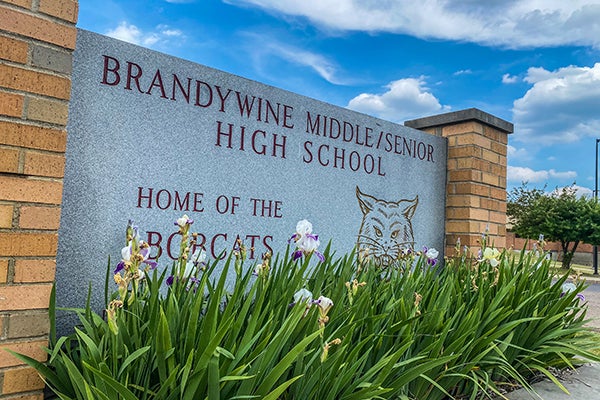Grand Mere: A living legacy expands its horizon
Published 6:37 pm Sunday, November 28, 2010
By TERRI GORDON
Off the Water
When the glaciers retreated 10,000 years ago, they left behind the framework for the unique collection of habitats that make up Grand Mere State Park. High-relief dunes, both wooded and open, line Lake Michigan’s eastern shore, protecting a series of lakes and other interdunal wetlands.
What makes Grand Mere so uncommon is the wide variety of habitats and species represented in such a small area. In addition, plants from both northern and southern latitudes grow in the park.
Rich diversity supports a variety of wildlife. Deer, raccoons, voles and foxes, perhaps even cougars, all make their homes in Grand Mere’s lush environment. Waterfowl — herons, ducks and geese — use the inland lakes, and migratory birds of all types travel through the park.
In 1968, the United States Department of the Interior recognized Grand Mere for its uniqueness and declared it a National Natural Landmark (www.nature.nps.gov/nnl).
Now protected as a critical dunes area, Grand Mere is hardly untouched by the workings of human development. Various enterprises, including a sawmill, vacation resorts, cranberry cultivation and fruit orchards, have all been tried on the land. Several privately owned homes line its edges.
The most controversial endeavor has been a sand mine in the southwestern corner of the park.
In 1965, a company called Manley Brothers began mining sand from the privately-owned Peters property adjacent the park. Mining stopped after a time, and by the time Manley Brothers wanted to start up again, the Sand Dune Management and Protection Act of 1976 was in effect. Mining required a permit. After a series of lawsuits, an agreement was reached and a permit was granted. Mining resumed in 1985 under the condition that when mining ceased, the property would be reclaimed, and ownership would revert to the state as part of Grand Mere State Park.
TechniSand purchased the property in 1991 under the same terms. A later permit allowed TechniSand to mine below the water table, now a lake on the property. As mining activity diminished in the late 1990s, TechniSand and the state looked toward reclamation of the land.
Since the property is a destined part of Grand Mere State Park, the plan went beyond current reclamation requirements to create a more ecologically sound reclamation. The goal, according to Glenn Palmgren, an ecologist with the Parks and Recreation Bureau of the Michigan Department of Natural Resources and Environment, was to establish a landscape to match, and eventually blend with, the surrounding dunes — a habitat able to thrive, sustain wildlife and naturalize into the native environment it would have been had it not been disturbed.
A broad wetland was created around the bottom of the lake, and the slopes were graded to match surrounding dunes. Volunteers collected seeds from the native plants of nearby sand dune communities.
“By collecting the seed locally, we know those plants are adapted to grow in the site conditions found at Grand Mere,” explained Palmgren, who developed the reclamation plan and guided its implementation. “We wanted not only native species, but native genetic varieties of these species, what we call local genotypes, from ecosystems in the area.”
Once collected, nearby nurseries cultivated the seeds, successfully propagating 81 of the 85 tried species.
The forests of southwest Michigan, before European influx, were predominantly black and white oak. Northern pin oak grew on hilltops and ridges, with northern red oak in the valleys, on north slopes and along wetland edges. These are the native habitats recreated on the TechniSand-Peters mine site, along with wetpanne environments, of sedges, rushes, grasses and forbs, that would surely have surrounded Grand Mere’s inland lakes.
Areas of hardwood forest and a prairie were also planted.
Efforts seem to be paying off. Palmgren believes about 60 percent of the plantings have survived. The percentage may even be higher.
“It will take a number of years to see,” he said. “Our goal is to get these native species established on that site and let nature take its course as (they) sort themselves out. Some die out on the sites, and some new ones come in on their own.
“Our primary efforts for the past five-plus years have been continuing control of invasive plants, with a focus on the invasives that have the potential to hinder the growth of the native plants. The most important invasive plants we’ve been working to control at the mine so far include phragmites, narrow-leaved cattail and Canada thistle.”
Palmgren is encouraged to find various animal species using the tract. Blanchard’s Cricket Frog, a fairly rare frog, has been spotted, shore birds regularly use the site and ducks are plentiful on the lake itself.
It will take 30 to 40 years for the seedlings planted in 2000 to mature into a fully developed forest — assuming they are successful in doing so. And even then, it is not the virgin system that it once was.
“We can come pretty close to approximating these sites,” said Palmgren, “but I don’t think we’ve ever totally created a natural ecosystem and I don’t think that will ever be possible, no matter how much we know, because they’re so complex.”
Still, a new trail is being blazed, and it is a hopeful one. Eventually, the public will be able to walk that trail — over the dunes of an expanded Grand Mere State Park to Lake Michigan on the other side.
Until then, visitors can still appreciate the existing park, with its woodlands, lakes and dunes, birds and wildlife. Grand Mere State Park is located on Thornton Drive in Stevensville, just west of Interstate 94 at exit 22.






